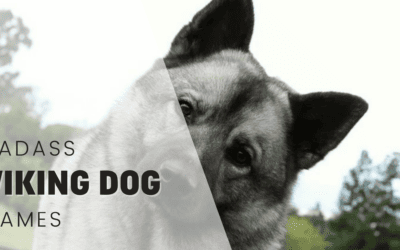It’s hard to know when to spay or neuter – or if you should at all. Here’s the best veterinary advice for your German Shepherd Dog.
So you’ve decided to spay or neuter your German Shepherd – but when?
Often called getting your dog Fixed or Done (nomenclature that bugs me, because, fixed, implies broken, which is kinda mean!), the majority of dogs have this minor procedure performed upon them at a young age. Usually on a veterinary recommendation.
I know when Indie was little, I was told: “Six months, on the dot” – which is common advice given across America and Europe. If you ask the Internet (i.e. Facebook) usually recommendations say later and say a minimum of twelve months.
But is that even right? Or is it founded in any sort of science?
Not likely…
I know when Indie was little, I was told: “Six months, on the dot”
Ali Smith
With this conflicting information, how are you meant to know? Trust your vet? Do as your family has always done? Or trust the rando on the internet who appears to know it all.
None of that seems to be a good idea when the potential consequences of these procedures are rumoured to be some of the scariest diseases and ailments a dog can face… Cancer, Hip or Elbow Dysplasia, and other rotten afflictions like pyometra. All of this as the result of removing the availability of hormones…
Luckily, research has come forward which is not just size specific, but breed-specific for 35 breeds! So, here we’re going to discuss the ideal times for spaying or neutering your dog.
First, let’s do a little housekeeping…

What is Neutering?
This is the surgical castration of a male dog – usually by the removal of his testicles (sorry for making you cringe, gents!). This process means that your male dog cannot breed and that they are no longer producing hormones that are important to your dogs’ development – both emotionally and physically.
What is Spaying?
Similarly to neutering, spaying is a form of surgical castration that removes the ovaries and most often the fallopian tubes along with it. This means your girl cannot breed, but it also means she is missing some critical hormones.
This process can be done in a ‘keyhole’ surgery at extra cost, though it is much better for recovery times.
So when is the best time for my German Shepherd?
Recommended age:
Male – 2 years and above
Female – 2 years and above
For both the boys and the girls the optimum time to get this done is at 24 months and over. This allows their hormones to do what they’re supposed to. This does vary a lot though from breed to breed.

What are the risks?
With most highly bred breeds – especially shepherds – they are often (sadly) maligned by disorders and cancer. So, here’s a quick overview of what the study says the breed suffer from depending on when their surgical castration (Spay or Neuter) was performed. The aim of providing this information is about giving you all the information to make the best decision.
Disorders include – Cranial cruciate ligament tears or ruptures, Hip Dysplasia, Elbow Dysplasia
Cancers include – Lymphoma, Hemangiosarcoma, Mast Cell Tumours, Bone Cancer (Osteosarcoma),
| Gender | Age of Surgical Castration | Disorder risk | Cancer Risk |
| Male | Under 6 months | 19% | 0% |
| Male | 6 to 11 months | 18% | 5% |
| Male | 12 to 23 months | 9% | 0% |
| Male | 2 years to 8 years | 3% | 3% |
| Male | Intact | 6% | 3% |
| Female | Under 6 months | 20% | 0% |
| Female | 6 to 11 months | 15% | 5% |
| Female | 12 to 23 months | 5% | 3% |
| Female | 2 years to 8 years | 6% | 3% |
| Female | Intact | 5% | 2% |
If you’re looking at the female intact vs the 2-8 years category and wondering why the recommendation is to spay? It’s because there is a 3% risk for an intact female to suffer from a Pyometra which is really pretty gross and unpleasant – and a huge risk to life that can be mitigated by spaying, so it just tips the balance in favour of spaying. Though, if you look a little lower, a hysterectomy could be your answer…
Are there other options?
If you’re doing what I am doing and looking at this research and reconsidering? It’s good to know that there are other options available.
Yes! On the presumption that these issues are caused by the lack of hormones (which is almost certainly the issue!) – there are a couple of ways to keep hormones but not facilitate breeding.
For Girls
Hysterectomy
This is the surgical removal of the uterus and only part of the fallopian tubes! The removal of these means that your girl is without the ability to breed – however – as she keeps her ovaries, hormones will still be produced and should mean that her risk levels are the same as an intact female – without the risk of pyometra! Though, there is a risk that the breeding instinct can remain? Which may be quite risky if a male tries to breed with her.
For Boys
Vasectomy
The tubes that run from the testes are called the vas deferens – these are what gets cut or removed in this instance – rendering your dog without the ability to impregnate a female. It leaves his hormones (and likely his desire to breed as a result) but also means that your dog should have the same risk factors as an entire male.
Chemical Castration
Did you know that surgical castration is not legal in Norway? Consequently what is common in Sweden, Denmark and Norway is chemical castration which is an injection your dog will have to have every six months that drop the levels of testosterone by approximately half. Which is proven to be effective in temporary neuter for your dog. This means you can actually test what castration might do to your dog and is often how it’s used in the UK and America – but it’s also a fantastic way of not putting your dog through surgical procedures.

About the Study
The study “Assisting Decision-Making on Age of Neutering for 35 Breeds of Dogs: Associated Joint Disorders, Cancers, and Urinary Incontinence” (Hart BL, Hart LA, Thigpen AP, Willits NH) was released in July 2020 – it covers 35 different breeds – and a separate scientific paper for mixed breeds. The study followed a total of 15,414 dogs over 15 years of recording;
- The age of the dog when neutered or spayed
- Breed
- Disorders including:
- Cranial cruciate ligament tears or ruptures
- Hip Dysplasia
- Elbow Dysplasia
- Pyometra (females only)
- Urinary incontinence (females only)
- Intervertebral disc disorders (Corgis & Dachshunds only)
- Cancers including;
- Lymphoma
- Hemangiosarcoma
- Mast Cell Tumours
- Bone Cancer (Osteosarcoma)
- Mammary Cancer (females only)
General Thoughts Across The Study
I find it incredibly interesting that there is a breed specific deviance. Prior to this, I was very much of the camp that it was simply a case of variations for dogs of different size brackets – but that appears not to be the case.
For example, a male Labrador (for whom I would have suggested similar to our wonderful German Shepherd boys) actually have the best results when neutered at 6 months – yet the females prefer a slightly older age (When Should I Spay Or Neuter My Labrador is here by the way!).
So it’s really worth doing your research about these things. As always? There’s not quite enough information to make a totally informed decision (yay for variables!) but, you can definitely get a good idea on it.
Other Considerations
It is worth noting that this study is a fantastic guideline – and one of the most solid pieces of research we’ve had – it doesn’t take into account many factors that I would imagine should be considered. The limitations I see are as follows;
- Multiple conditions were not recorded if they fell in the same category,
- Genetics were not considered,
- Living conditions were not considered,
- Food quality was not considered,
- The exercise was not considered,
- Body condition was not factored in because it had been studied previously and no strong correlation was found between body condition and joint issues.
The biggest thing I can say is, that whilst this is the scientific recommendation for when to spay or neuter your German Shepherd Dog do remember that at the end of the day? This is your decision. You are the only one who can make this decision. So, do your best – you’ve already found a phenomenal resource – just keep reading.
If you have any questions about spaying or neutering your german shepherd, drop it in the comments below! I’ll soon be doing a spay/neuter Frequently Asked Questions, which should help!






My female German Shepherd turned one year old two weeks ago. I was going to have her spayed last week and she went into her 2nd heat, so I postponed the procedure for a little over a month from now. I have heard so many different opinions from vets as to when I should spay her. One vet said to do it when she was 5 mos old and another said to wait until the 24th month of age. Another said to do it when she was 10 months old. I decided to wait until after she turned a year old.
She is presently in her 3rd day of heat, bleeding. When should I have her spayed? I want to do it after this heat but before her next one.
So hard to make this move, especially since I’ve been told and read so many different things. I appreciate your input.
In addition to her being spayed, it was suggested as a preventative measure to do a gastropexy on her due to the fact GSD are prone to bloating and their stomachs turning. Is that normal to do? I just keep thinking of the pain my girl will be in with two procedures, but imagine the benefits outweigh the potential risks?
Hey Vicky!
The study suggests waiting until at least two years to minimise risk.
The other thing then you consider is behaviour. Behaviour is complicated and if your girl is struggling with anything from reactivity to Seperation anxiety, I would ensure you train for these first and get her as “recovered” as possible, then go for the surgery.
Your vets are likely pushing this to ensure that she doesn’t have any unplanned or irresponsibly bred litters, but if you can be responsible for her whilst she’s in her seasons, 2 is an ideal age.
This has really helped me. I had a Weimaraner who I left intact until age 14, the only reason for castration was to prevent cancer.
My 22 month old GSD dog is typical of the breed, affectionate, strong willed, loyal, protective but he does enjoy chasing small animals a little too much. I can call him off immediately in most instances, but if the animal in question runs and he begins to give chase, the situation could escalate to him nipping their back end.
I understand that this is instinctual, he is designed to herd sheep and he herds my two female basset hounds (he circles them and urges them back to me if they are not listening) but I am hoping that he will be a little more mellow after castration/vasectomy.
I hope I am making the right decision, and for the right reasons. I didn’t want to stunt his growth or ability to be maximally agile and quick thinking, he eats raw food and gets ample exercise, is well trained and socialised. It is only with dogs that are clearly terrified, yapping and agitated by his size before he has approached them, that spur him to chase them.
Any advice welcome please.
Hey Sian! I totally get your standpoint – it’s hard to know for sure.
One option you might want to think about is chemical castration because (behaviorally speaking) isn’t really going to effect prey drive with animals.
But on small dogs? Feel free to book a bark day and we’ll discuss it all!
Female gsd 3 year old just hysterectomy. Male gsd is 4… Thinking of doing a full neuter and spay. Harder to keep them apart and her heat cycles are shorter. Any advice or reassurance?
A good way to keep them apart is to put your boy into a different home (like a friend or family members!) for the short term. Neutering him may not stop him from stressing when she goes into her season.